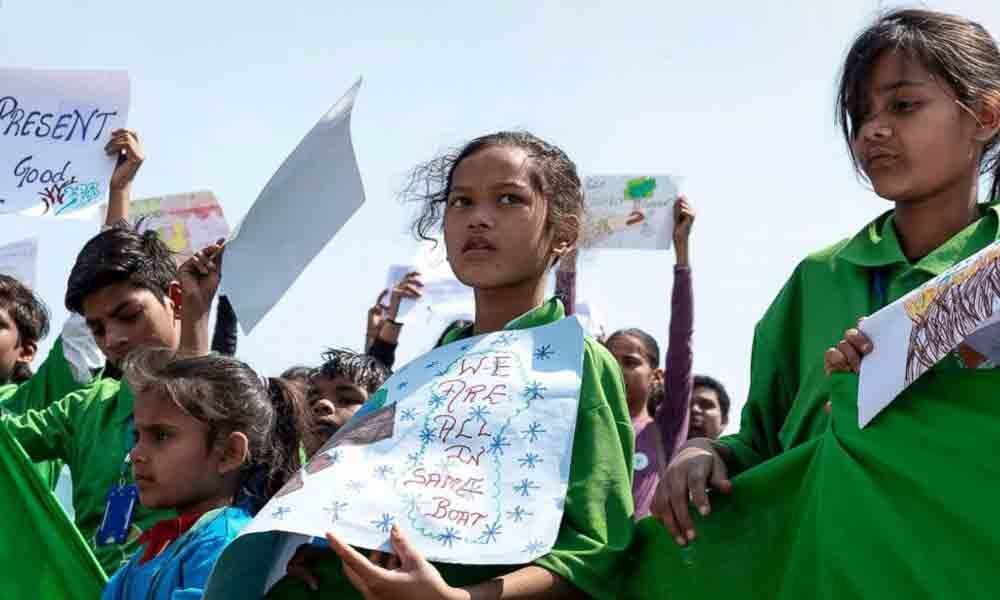Youth to suffer fury of climate change in India

The time to change that is now, for today and for the future
With every passing year, India's increasing suffering at the hands of drought and extreme weather showcases more evidence of the devastating effects of climate change jolting the country. More than 400 people died in a span of 100 days last year as a result of 40 storms ravaging the country.
Thermal power plants, that were set to be shut down, such as the Badarpur power plant in Delhi, continue to pollute, and the government fails to warn citizens about the storms early enough, despite early warning systems being put in place. But in the recent years, those that have been standing up against the government's lackadaisical climate action have been the youth—not just in India but around the world.
It is widely known that climate change will hit the poorest the hardest; however, not only will climate change deepen inequalities within a generation, it will also exacerbate the inequalities between different future generations. Present inaction on climate change will leave the burden of coping with its deleterious impacts on the youth and future generations. But, the youth of today are not settling for this grim fate.
In recent years, the youth globally have become the vanguard in the fight against climate injustice. In experiencing the first-hand the toll climate change takes on them and their communities youth are now protesting and employing advocacy as ways to combat climate inaction. The Youth Climate March also known as the "Zero Hour" March, held in Washington, DC on July 21 last year, along with sister marches that took place around the world, are testament to the fact that the world's youth do not depend on adults to help improve their lives on this planet. This teenager-led movement used the power of social media and advocacy to raise awareness and call for immediate action towards climate change.
Today's youth are also becoming more environmentally conscious and taking action through lifestyle changes. In India, the zero-waste movement has been gaining traction over the last few years, with an increasing number of youth committing to creating minimal waste. What started as an online group of a few hundred members on social media a few years ago has now become a community of around 16,000 members pledging to avoid waste creation and landfill emissions.
Litigation has been another avenue through which youth have tried to hold their governments accountable for inadequate climate action and establish intergenerational equity. In November 2016, a group of 21 young people between the ages of 9 and 20 sued the US government for failing to take adequate and appropriate action towards climate change and protecting public resources, resulting in a violation of the younger generations' constitutional rights to life, liberty and property. Considering that a majority of India's population comprises of youth—with more than half of the country's population of 1.25 billion people less than 25 years of age—it is almost inconceivable to see the Indian government's lack of climate action to protect its future generations, and drivers of economy and society.
In witnessing increasing environmental destruction and lethargic climate action by people in power, humanity and especially the youth must not become hopeless and spiral into apocalyptic fatigue. We, the youth, should persevere and continue to speak up, engage with others and fight for everyone's rights, just like many are already doing today. The more we consistently demand for action and the more people join the climate movement, the more the government and other entities will cave in to our needs. And as people (of all ages) sharing this world over time, there needs to be an effort to empathise and mentally connect with those that are yet to arrive at our home (like many already attempting to do with their ancestors), and to join the fight for their well-being too.

















